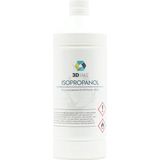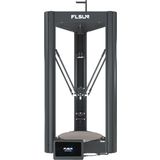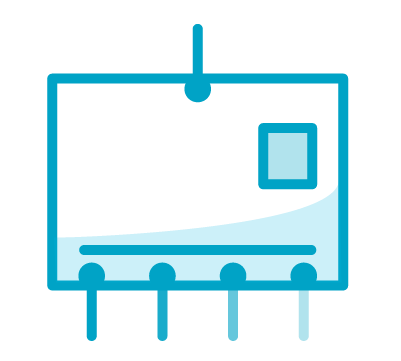3D printers and other devices
The right equipment for your project!
In our extensive range, you will not only find numerous 3D printers but also high-quality 3D scanners, laser cutters, vacuum formers and numerous devices for post-processing. So you are perfectly equipped for creative demands of all kinds and you can let your creative spirit run free.
Shop by category.
-

-

Elegoo Neptune 4 Pro
- ARM 64-bit high-performance mainboard
- Dual Gear Direct Drive Extruder
- Powerful cooling system
-

-

Creality Ender 3 V3 SE
- Build volume 220 x 220 x 250 mm
- T-shaped profiles
- Rigid axles & robust linear rails
-

Creality Ender 3 V3 KE
- Build volume 220 x 220 x 240 mm
- Max. printing speed 500 mm/s
- Optimised “Sprite” direct drive extruder
-

Elegoo Neptune 4
- ARM 64-bit high-performance mainboard
- Dual Gear Direct Drive Extruder
- Powerful cooling system
-

Creality K1C
- Build volume of 220 X 220 X 250 mm
- Max. printing speed of 600 mm/s
- All-metal direct drive extruder
-

Elegoo Mars 4 Ultra
- 9K HD monochrome LCD screen
- COB Fresnel collimating light source
- 9H scratch-resistant screen protector
-

Anycubic Kobra 2 Max
- 1.2GHz Cortex-A7 dual-core processor
- Dual gear direct drive extruder
- Dual Y & Z axis
-

-

-

Creality K1 Max
- Printing speeds up to 600 mm/s
- Build volume 300 x 300 x 300 mm
- Fully automatic bed levelling
-

-

-

TwoTrees TTC450 CNC Milling Machine
- Robust construction
- Working area of 460 x 460 x 80 mm
- 80W standard spindle
-

-

Anycubic Kobra 2 Pro
- 1.2GHz Cortex-A7 dual-core processor
- Dual gear direct drive extruder
- Dual Y & Z axis
-

-

-

-

-

-

-

All prices excl. VAT.
A 3D printer for the home
The development of 3D printing wasn't just a milestone for companies. Private individuals also benefit from this technology. With their help, you can design your own jewellery or make spare parts or individualised pieces for model making ...
Here you can find out what 3D printing actually is and how it works.
How does 3D printing work?
Basically, with 3D printing, a three-dimensional object is produced, layer by layer. The object that is to be printed must first be available as a three-dimensional digital model. This can be designed by yourself or you can download models from the Internet. Every 3D printer is equipped with special software that calculates the necessary commands for the printer from these models and then it starts.
A nozzle that can move in all directions (including up and down) applies the printing material. It is a thick filament made of plastic.
The nozzle moves in the previously calculated paths over the print bed. The filament thread that comes out of the nozzle is applied in several layers on top of each other so that the object slowly grows in height, layer by layer. The filament cools and hardens quickly, which is what makes this additive manufacturing possible, i.e. manufacturing by adding layer upon layer. This also creates the grooves typical of 3D printed objects.
Incidentally, the objects are not completely filled. A grid structure is printed inside. This saves material and still ensures great stability.
Areas of application
3D printers are extremely versatile, which is why the technology is of interest to a wide variety of users. Here we have listed the most important application examples (but by no means all):
- Production of samples
- One-off production
- Small batch production
- Production and customisation of parts for model making
- Inexpensive entry into CNC processes
- Production of artistic sculptures
- Jewellery design
- Production of miniature models and designs for architects
Printing material - Criteria when purchasing
Printing materials, i.e. filaments, come in many different designs. However, what all filaments have in common is that they become soft and malleable when exposed to heat. The filaments are bought as plastic spooled on a roll. The most commonly used materials are thermoplastics like PLA & ABS.
When buying a 3D printer, it is important to know which raw material the printer should be able to work with. Basically there is a choice between ABS and PLA.
PLA stands for polylactic acid and consists of biodegradable natural plastic. With PLA, the printing plate does not have to be preheated and the temperature of the nozzle must not exceed 210 ° C. The disadvantage is that PLA deforms at temperatures above 60 ° C. So if you want, for example, printed coffee mugs this becomes a problem.
ABS means acrylonitrile butadiene styrene and is made from petroleum. ABS has higher requirements for a printer than PLA. The printing plate must be preheated for this, the nozzle temperature must be above 210 ° C and an enclosed print chamber is recommended. An ABS-enabled printer can usually print PLA as well. It doesn't work the other way around.
Important basic terms
The decisive criteria when buying a 3D printer should always be quality. Here are the most important performance and comparative data:
Print space: This specifies the maximum size of the print object. Standard entry-level printers have a print space of around 200x200x200mm. So which printer you need depends on the size of the print objects.
Maximum print speed: This value indicates how fast the nozzle can move. However, the maximum value is only reached on longer journeys. Most of the time, the printers are slower than their maximum speed.
Positioning accuracy: Expresses how precisely the printer can move to a certain point. The more precise, the more detailed the print results.
Minimum layer height: Together with the positioning accuracy, this is important for the print quality. The lower the value, the better the printer, because then it can print thinner layers.
Spare parts and upgrades
There are a number of accessories and spare parts available for most 3D printers today. This offers you almost unlimited possibilities for adapting a 3D printer to your individual needs. From kits of 3D printers that you assemble yourself, to retrofitting extruders to external, cloud-compatible control elements as well as engraving or milling attachments, everything is included. There are practically no limits to your creativity. If a conversion is ever less successful, spare parts are available.







